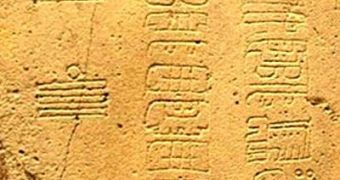A new study shows that the main support of the 2012 apocalypse, the Mayan Long Count calendar, may have been misinterpreted, and that the end of time which it dictates may have already happened, or will happen a century from now.
Whether this is good or bad news is still open fro interpretation, but one thing is for sure – according to the research, the end of the Long Count may come in a decade or a century, or may have already happened.
Previous interpretations showed that the calendar ends on December 12, 2012, and adepts of apocalyptic theories have used this as a basis for a large number of scenarios in which the world ends, or gets enlightened, on that day.
Far from being an isolated phenomenon, belief that the end of the world will take place two years from now is very widespread. It is the kind of self-sustaining belief, experts say, that cannot be argued against with reason, logic and facts.
In the new investigation, researchers have shown that the basis on which the Mayan Long Count was calculated and converted into regular years, something called the GMT constant, may have not been proven correct after all.
The new idea appears in the textbook “Calendars and Years II: Astronomy and Time in the Ancient and Medieval World” (Oxbow Books, 2010), and is authored by expert Gerardo Aldana.
He holds an appointment as a professor of Chicana and Chicano Studies at the University of California in Santa Barbara (UCSB), LiveScience reports.
In the book, the expert shows that the conversion of Mayan dates into modern dates may be off by as much as 100 years.
A major implication for this is that the dates associated with significant events in the history of the ancient culture may have been miscalculated as well.
The current interpretation of the Long Count is based on the GMT constant, which in turn relies on dates recovered from colonial documents that were written in the Latin alphabet.
Later on, Floyd Lounsbury, an American linguist and anthropologist, used another Mayan calendar, the Dresden Codex Venus Table, to support the existence of the GMT constant.
“He took the position that his work removed the last obstacle to fully accepting the GMT constant. Others took his work even further, suggesting that he had proven the GMT constant to be correct,” the author adds.
But Aldana believes that evidence to support the constant are scarce at best, and also far from conclusive.
“If the Venus Table cannot be used to prove the GMT as Lounsbury suggests, its acceptance depends on the reliability of the corroborating data,” the expert explains
He goes on to say that all historical data on the Mayans are a lot less reliable than even the Table, which means that there is basically no support for the GMT constant left.

 14 DAY TRIAL //
14 DAY TRIAL //